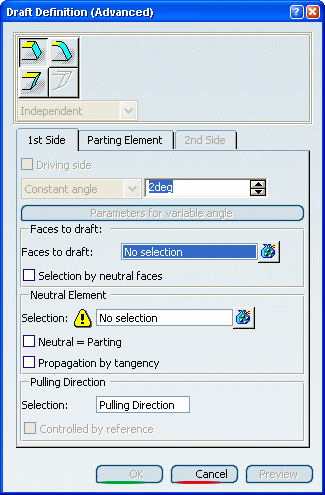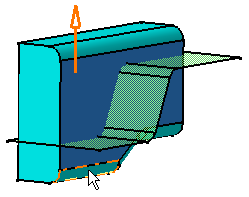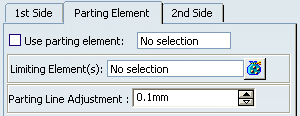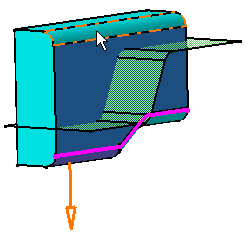Select View > Toolbars > Advanced Dress-Up Features
to access the Advanced Dress-Up toolbar.
Click Advanced Draft
 .
.
The Draft Definition (Advanced) dialog box appears and
you can see a default pulling direction (xy plane) in the geometry.

Specify that you wish to draft two faces with reflect
lines by clicking both icons as shown:

The combo list below is now available.
For the purposes of our scenario, ensure that Independent
is on.
In the Neutral Element frame, click
No Selection and select the fillet as shown.

In the Pulling Direction frame, click
Pulling Direction in the Selection box and select
the part's bottom face to specify a new pulling direction.
Enter 10 as the angle value.
Click the Parting Element tab to define the
parting element.

Select the Use parting element check box
and select the green surface as the parting element.
The Parting Line Adjustment option adjusts the smoothness
of the transition zone on the draft surface. Usually, the default value
(0.1mm) proves to be efficient most of the time.
Click the 2nd Side tab to define the second
face to be drafted.
In the Neutral Element frame, click
No Selection from the combo list and select the second fillet.
Both faces to be drafted are now selected. The application
displays the reflect line in pink.

Enter 6 as the angle value.
Click OK to confirm.
Both faces are drafted using a distinct angle value, as specified.

Due to the use of the angle values you have
set, this operation results in a "step" where both drafted faces
meet.
![]()






